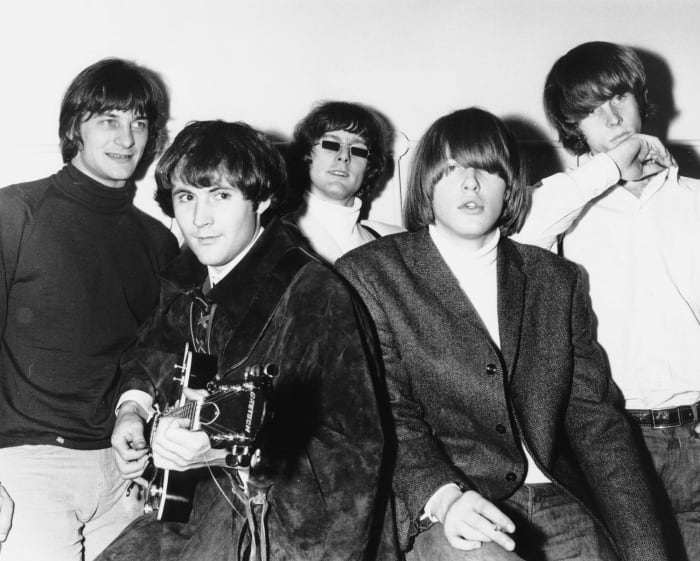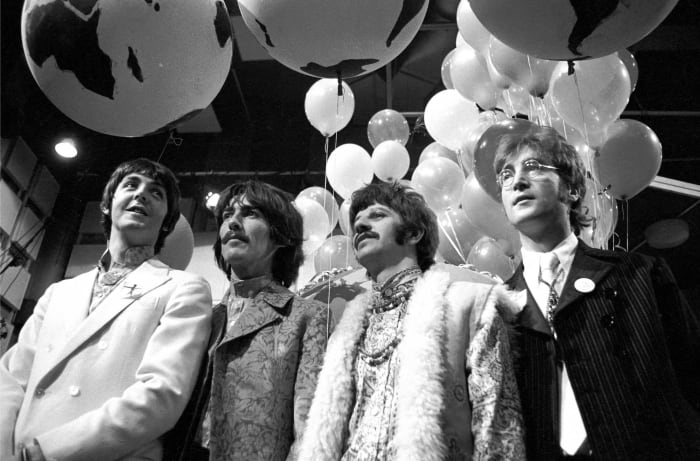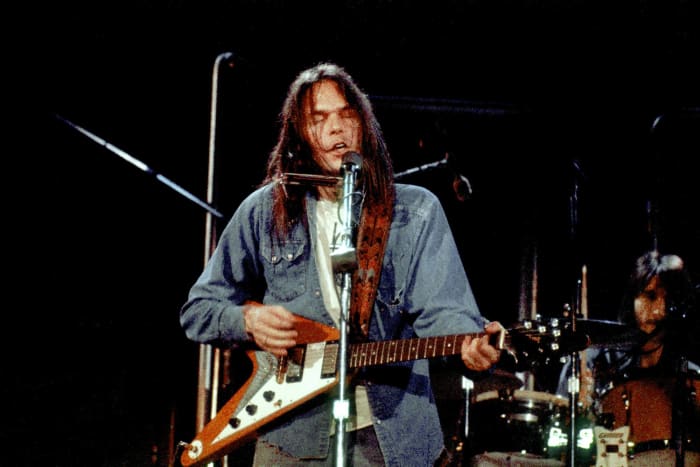- Home
- Quizzes
- My Quiz Activity
- Newsletters
- Sports Betting
- MY FAVORITES
- Add Sports/Teams
- SPORTS
-
NFL
- NFL Home
- Arizona Cardinals
- Atlanta Falcons
- Baltimore Ravens
- Buffalo Bills
- Carolina Panthers
- Chicago Bears
- Cincinnati Bengals
- Cleveland Browns
- Dallas Cowboys
- Denver Broncos
- Detroit Lions
- Green Bay Packers
- Houston Texans
- Indianapolis Colts
- Jacksonville Jaguars
- Kansas City Chiefs
- Las Vegas Raiders
- Los Angeles Chargers
- Los Angeles Rams
- Miami Dolphins
- Minnesota Vikings
- New England Patriots
- New Orleans Saints
- New York Jets
- New York Giants
- Philadelphia Eagles
- Pittsburgh Steelers
- San Francisco 49ers
- Seattle Seahawks
- Tampa Bay Buccaneers
- Tennessee Titans
- Washington Commanders
-
MLB
- MLB Home
- Athletics
- Arizona Diamondbacks
- Atlanta Braves
- Baltimore Orioles
- Boston Red Sox
- Chicago White Sox
- Chicago Cubs
- Cincinnati Reds
- Cleveland Guardians
- Colorado Rockies
- Detroit Tigers
- Houston Astros
- Kansas City Royals
- Los Angeles Angels
- Los Angeles Dodgers
- Miami Marlins
- Milwaukee Brewers
- Minnesota Twins
- New York Yankees
- New York Mets
- Philadelphia Phillies
- Pittsburgh Pirates
- San Diego Padres
- San Francisco Giants
- Seattle Mariners
- St. Louis Cardinals
- Tampa Bay Rays
- Texas Rangers
- Toronto Blue Jays
- Washington Nationals
-
NBA
- NBA Home
- Atlanta Hawks
- Boston Celtics
- Brooklyn Nets
- Charlotte Hornets
- Chicago Bulls
- Cleveland Cavaliers
- Dallas Mavericks
- Denver Nuggets
- Detroit Pistons
- Golden State Warriors
- Houston Rockets
- Indiana Pacers
- Los Angeles Clippers
- Los Angeles Lakers
- Memphis Grizzlies
- Miami Heat
- Milwaukee Bucks
- Minnesota Timberwolves
- New Orleans Pelicans
- New York Knicks
- Oklahoma City Thunder
- Orlando Magic
- Philadelphia 76ers
- Phoenix Suns
- Portland Trail Blazers
- Sacramento Kings
- San Antonio Spurs
- Toronto Raptors
- Utah Jazz
- Washington Wizards
-
NHL
- NHL Home
- Anaheim Ducks
- Boston Bruins
- Buffalo Sabres
- Calgary Flames
- Carolina Hurricanes
- Chicago Blackhawks
- Colorado Avalanche
- Columbus Blue Jackets
- Dallas Stars
- Detroit Red Wings
- Edmonton Oilers
- Florida Panthers
- Los Angeles Kings
- Minnesota Wild
- Montreal Canadiens
- Nashville Predators
- New Jersey Devils
- New York Islanders
- New York Rangers
- Ottawa Senators
- Philadelphia Flyers
- Pittsburgh Penguins
- San Jose Sharks
- Seattle Kraken
- St. Louis Blues
- Tampa Bay Lightning
- Toronto Maple Leafs
- Utah Hockey Club
- Vancouver Canucks
- Vegas Golden Knights
- Washington Capitals
- Winnipeg Jets
- NCAAF
- NCAAM
- Olympics
- Boxing
- Entertainment
- Lifestyle
- Golf
- MMA
- Soccer
- Tennis
- Wrestling
- More Sports
- RESOURCES
- My Account
- YB on Facebook
- YB on Twitter
- YB on Flipboard
- Contact Us
- Privacy Policy
- Terms of Service

The cannabis culture has always looked at April 20 as a celebration of that certain smoked weed, used at 4:20 p.m. or any time of the day. In certain places in the U.S., folks can even blaze up without fear of getting in trouble.
In the musical world, drugs, not just pot, are popular subject matter. Whether for autobiographical, glorification or cautionary purposes, music and drugs have long gone together. So to recognize "4/20," here's a look some of the better songs about drugs.
"Eight Miles High," The Byrds (1966)

The title alone implies the reference to drug use, and radio stations were not allowed to play the song for a time because of the presumed subject matter. Though the band denied any relation to drugs at the time, members of The Byrds later admitted their own drug use was at least a source of inspiration for one of its most memorable tunes.
"Heroin," The Velvet Underground (1967)

Perhaps this is the Hall of Famers' most well-known song and arguably its darkest. For those who have never taken the drug, Lou Reed does a stellar job, from a musical standpoint, of taking the listeners on a ride as if they are in the middle of a fix. It's a song that's haunting, troubling and brilliant — all at the same time.
"Lucy in the Sky with Diamonds," The Beatles (1967)

Is there a song regarding drugs, specifically acid, that's been more critiqued and studied than this one ? Paul McCartney, for one, admitted the band's drug use influenced its music at times. Some camps suggest John Lennon was inspired, partly by an LSD trip, when putting together this whimsical, psychedelic masterpiece, which according to legend, was the creation of a drawing by Lennon's young son Julian about a classmate named Lucy. Of course, the first letters of Lucy, Sky and Diamonds, capitalized in the title only, add to the intrigue.
"White Rabbit," Jefferson Airplane (1967)

The result of a Grace Slick acid trip, "White Rabbit" became one of the defining songs of the '60s as well as the Vietnam era. From 10-foot tall Alice to a hookah-smoking caterpillar, the imagery Slick creates in roughly two-and-a-half minutes is really quite remarkable. It's easy to see why it was at the forefront of the psychedelic sound of the decade.
"Journey to the Center of the Mind,” The Amboy Dukes (1968)

One of the great rock songs of the 1960s, it was co-written by "Motor City Madman" Ted Nugent, one of the band's guitarists. The song describes an acid trip, which is interesting because Nugent has preached about his sobriety, seemingly forever. However, legend has it that Nugent never got the drug reference of the song and thought the lyrics by bandmate Steve Farmer were simply about chemical-free mind exploration. Really, Ted?
"Sister Morphine," Rolling Stones (1971)

Written by Mick Jagger and Keith Richards, with Marianne Faithfull, it was a hit for her in 1969, then for the Stones a couple of years later on "Sticky Fingers." Considered perhaps the darkest of the band's compositions, It speaks somewhat autobiographically about dependence on the drug morphine while hospitalized. The song also reportedly led Faithfull into her lengthy spell of addiction.
"Sweet Leaf," Black Sabbath (1971)

The intro is actually guitarist Tony Iommi coughing from a hit of the joint he was smoking. This hard-charging Sabbath tune is all about the band's fancy for marijuana and its role in the boys' everyday lives. It did not enjoy the commercial success as that of gems like "Paranoid and "Iron Man," but it might be the group's most underrated song.
"The Needle and the Damage Done," Neil Young (1972)

This Young classic is a first-hand account of watching friends deal with their heroin addiction, particularly Crazy Horse band member Danny Whitten, who died of an overdose at age 29, months after the song's release. There is nothing sugar-coated and hidden in Young's lyrics. It's one of rock's most lyrically powerful songs that checks in at just over two minutes long.
"Cocaine," Eric Clapton (1977)

Though singer-songwriter J.J. Cale penned the song, Clapton took it to mainstream and commercial success. While the track is no doubt about cocaine, Clapton's take on the piece has always been as an anti-drug song.
"Gold Dust Woman," Fleetwood Mac (1977)

Stevie Nicks' history of cocaine abuse is legendary on some fronts, and "Gold Dust Woman" was about her early introduction to the drug. At the time she wrote the hit that became part of Fleetwood Mac's classic "Rumours" LP, she was enamored about what the drug had a potential to do to its user. In time she experienced it firsthand and quite often.
"That Smell," Lynyrd Skynyrd (1977)

In twisted fashion, Skynyrd frontman Ronnie Van Zant was concerned that his — and the rest of the band's — drinking and drug use were getting out of hand. This "Street Survivors" gem was inspired after drunken and high guitarist Gary Rossington crashed his car into a tree. The song was a warning that the group's reckless lifestyle might come back to haunt it. Just days after "Street Survivors" was released in October 1977, the band's chartered plane crashed in a wooded area of Mississippi, killing Van Zant and guitarist Steve Gaines, among others.
"White Horse," Laid Back (1983)

Perhaps the biggest mystery surrounding this dance-pop club favorite of the early 1980s is whether the band is singing about cocaine or heroin — perhaps it's both? Is this an anti-drug song? Or is the band offering its preference for one drug over the other? Regardless, it was a hit in the U.S. and totally '80s — especially the video.
"White Lines (Don't, Don’t Do It),” Grandmaster & Melle Mel (1983)

One of the first over-the-top, drug-conscious songs to hit mainstream radio, "White Lines" warns listeners about the troubles that await from using, selling or smuggling cocaine. Though the song is credited along with the Grandmaster or Grand Master Flash name, the group's MC, Melle Mel, was the writing and rapping force behind the tune that was a major influence on many rappers and hop-hip artists who followed.
"Bad," U2 (1984)

Certainly a highlight of U2's expansive catalog and a longtime live favorite, the song is about heroin addiction in the group's hometown of Dublin. Bono has often spoke on that subject before the song is played in concert, at times bringing up specific people he's known who have died from it. The live version from 1985's "Wide Awake in America" will be a major part of the band's legacy.
"Master of Puppets," Metallica (1986)

The title of what's arguably Metallica's best album, "Master of Puppets" pretty much speaks on how drugs can have a controlling nature on users and make them submissive to their power. The line "chop your breakfast on a mirror" solidifies that notion. Even at roughly eight-and-a-half minutes, it's still a staple of the band's live shows.
"Mr. Brownstone," Guns N' Roses (1987)

This "Appetite for Destruction" favorite speaks of heroin's grip on certain members of the band, specifically Slash and Izzy Stradlin. Back in the heyday of the band, members stated that they didn't always know what song would open a G 'n R live show, but "Mr. Brownstone" would always be second on the set list.
"Dr. Feelgood," Motley Crue (1989)

It's Nikki Sixx's ode to drug dealers. Reportedly, the band was clean at the time of its release on the same smash album of the same name. The hard-charging, heart-pounding production of Bob Rock adds to the intensity of the track.
"Mary Jane's Last Dance," Tom Petty & The Heartbreakers (1993)

The late Petty never publicly offered up the true meaning of the song, and longtime Heartbreakers guitarist Mike Campbell has given the standard, "It can be whatever you want it to be." So one obvious and popular interpretation is that it's about marijuana. "Mary Jane" is slang for the drug and often used to "kill the pain." Let's go with that.
“Semi-Charmed Life," Third Eye Blind (1997)

Don't let the pop-tinged sounds and the "doot, doot, doots" be a distraction. Third Eye Blind's biggest hit is really about an individual's addiction to crystal meth and the miserable life that comes with it, according to singer Stephan Jenkins. Things might look good on the outside, but there's plenty of pain inside. It's almost a cry for help, of sorts. Then again, when it winds up in the raunchy teen classic "American Pie," it's easy to forget the song's true meaning.
"Drug Ballad," Eminem (2000)

It's Eminem's "love song" to drugs and alcohol. It's certainly not the most politically correct song in Em's arsenal, but it's about what he's experienced and how the drugs "really got a hold of me." It's not supposed to be glamorous, but it's honest.
"Because I Got High," Afroman (2001)

The man also known as Joseph Foreman found himself an internet sensation because of his day spent getting high on weed. Both Howard Stern and Kevin Smith were big fans, with the latter directing the video for the song and using it in 2001's "Jay and Silent Bob Strike Back."
"Purple Pills," D12 (2001)

Thanks to help from Eminem, his buddies from Detroit earned some success in the early 2000s with this substance-themed piece. The original uncut version was way too harsh for radio, with several references to drug use and sex. The tamer, edited version, "Purple Hills," was created but nowhere near captured the unabashed ode to debauchery that the song glorifies.
"The A Team," Ed Sheeran (2011)

This Sheeran track has an upbeat tempo, but there's not anything positive about a prostitute addicted to crack. Sheeran has said he got the idea for the song after visiting a homeless shelter, where he saw and heard tales of how inhabitants lived their lives. He brilliantly offered a dramatic, composited take on a dark subject unknown by most of his millennial fan base.
"Habits (Stay High)," Tove Lo (2013)

Give this Swedish electro-pop/alt singer credit: She's brutally honest when it comes to her music. Her breakthrough hit is a perfect example. Lo has reportedly said the song's nature refers to her turning to some vices, like drugs, to get through a breakup and then making bad decisions and binging on Twinkies while trying to get by. Seems relatable.
"Drug Dealer," Macklemore (2016)

In a unique but certainly important approach, Macklemore (Ben Haggerty) looks at prescription drug and opioid use and the harm it can cause to those who become addicted, often with the help of medical professionals. Singer Ariana DeBoo's appearance adds to the intensity of the song that references Prince and Michael Jackson but lets listeners know these problems are not limited to the rich and famous.
A Chicago native, Jeff Mezydlo has professionally written about sports, entertainment and pop culture for parts of four decades. He was an integral member of award-winning sports sections at The Times of Northwest Indiana (Munster, Ind. ) and Champaign (Ill
More must-reads:
- 20 celebrities who worked normal jobs after making it big
- Chris Evans lauds Marvel co-star Sebastian Stan as "really fearless" and "takes big swings"
Breaking News
Customize Your Newsletter
 +
+
Get the latest news and rumors, customized to your favorite sports and teams. Emailed daily. Always free!
PRIVACY POLICY EDITORIAL POLICY CONTACT US
ABOUT YARDBARKER TERMS OF SERVICE
Use of this website (including any and all parts and
components) constitutes your acceptance of these
Terms of Service and Privacy Policy.
This site is for entertainment purposes only.
There is no gambling offered on this site.
Gambling Problem? Call 1-800-Gambler.
